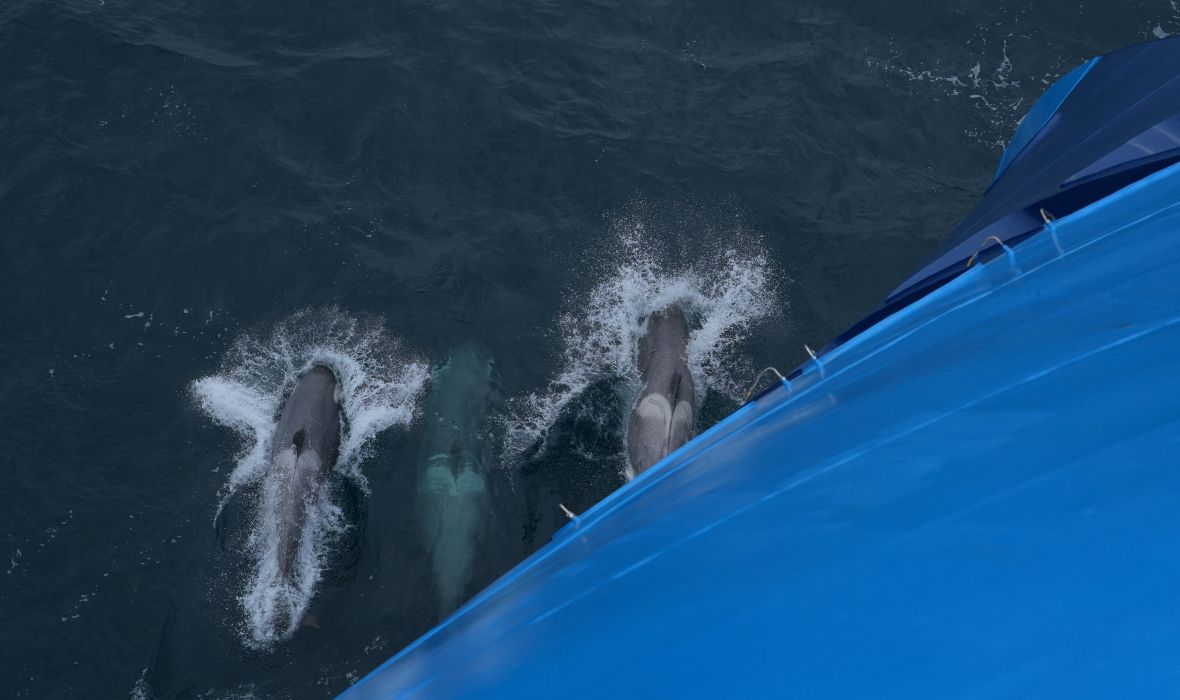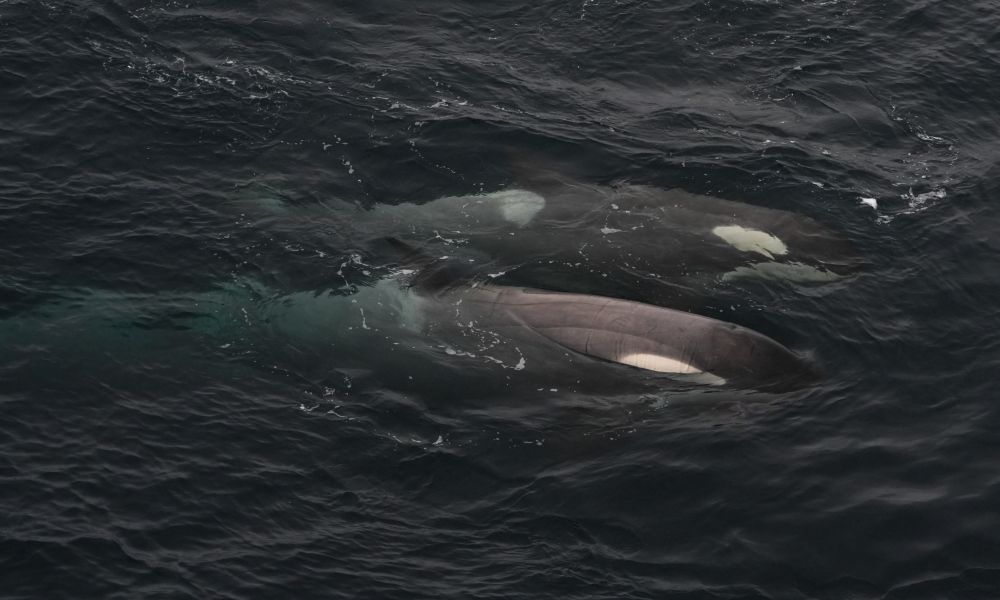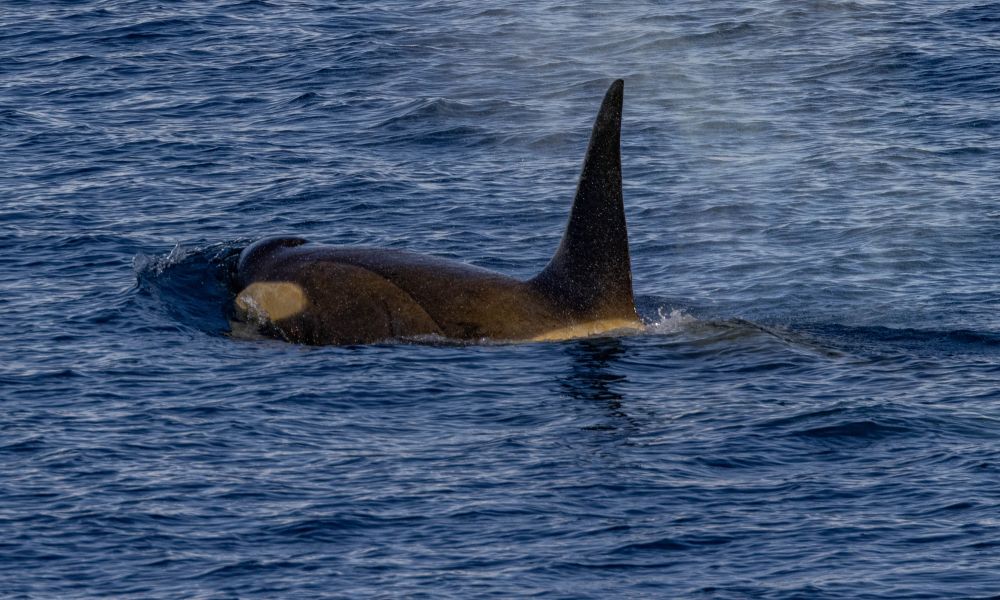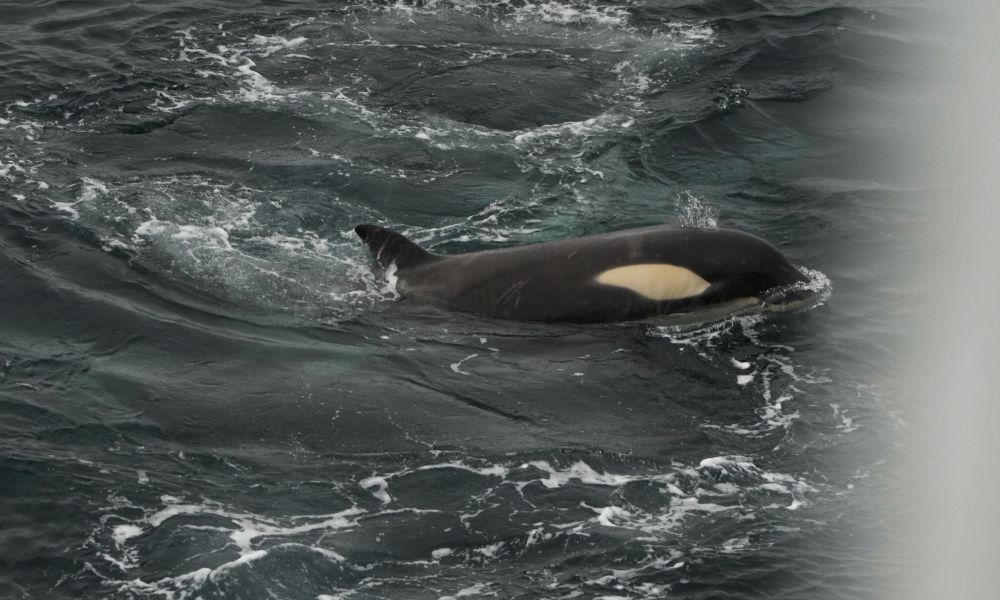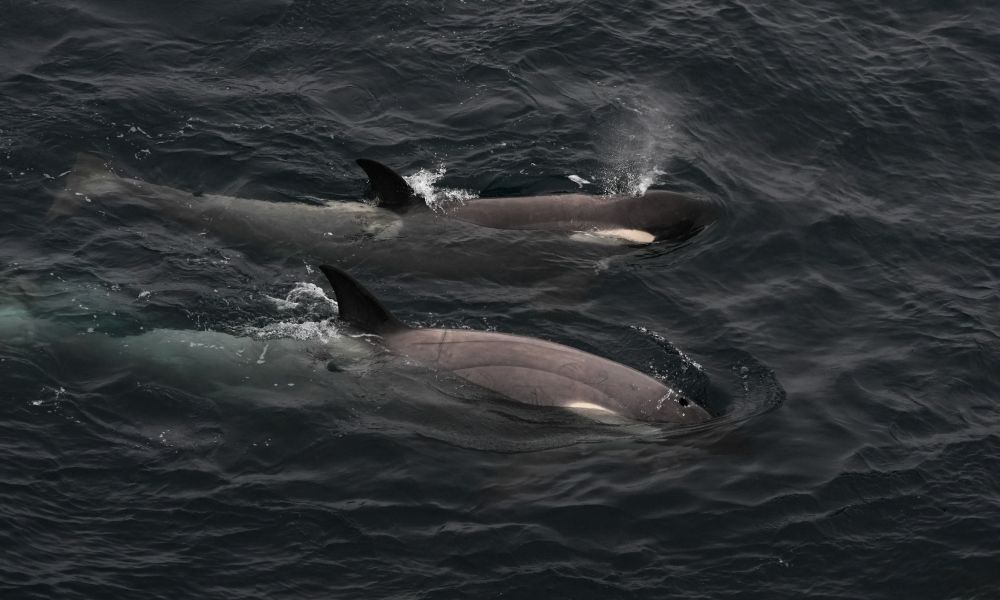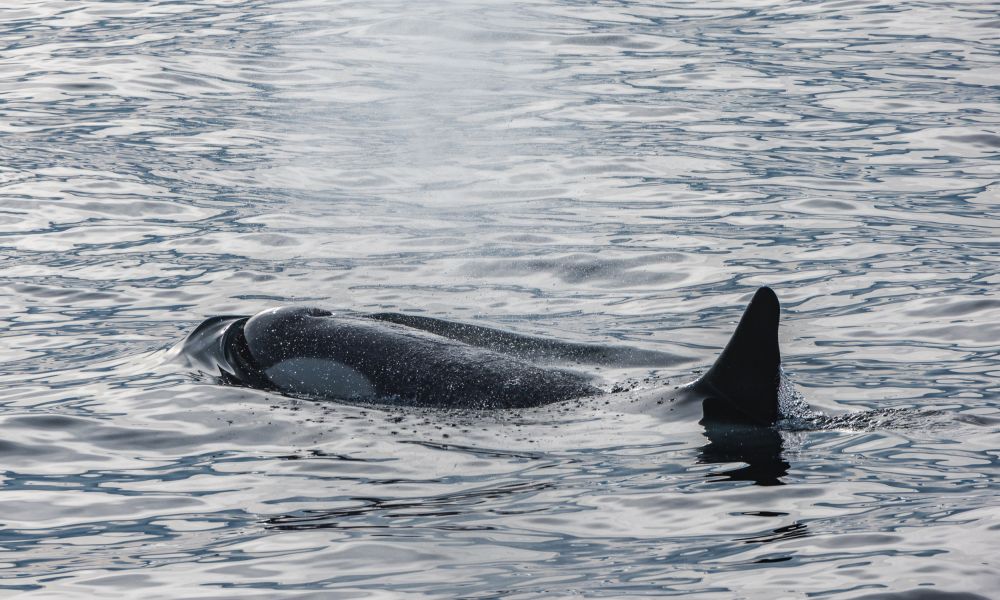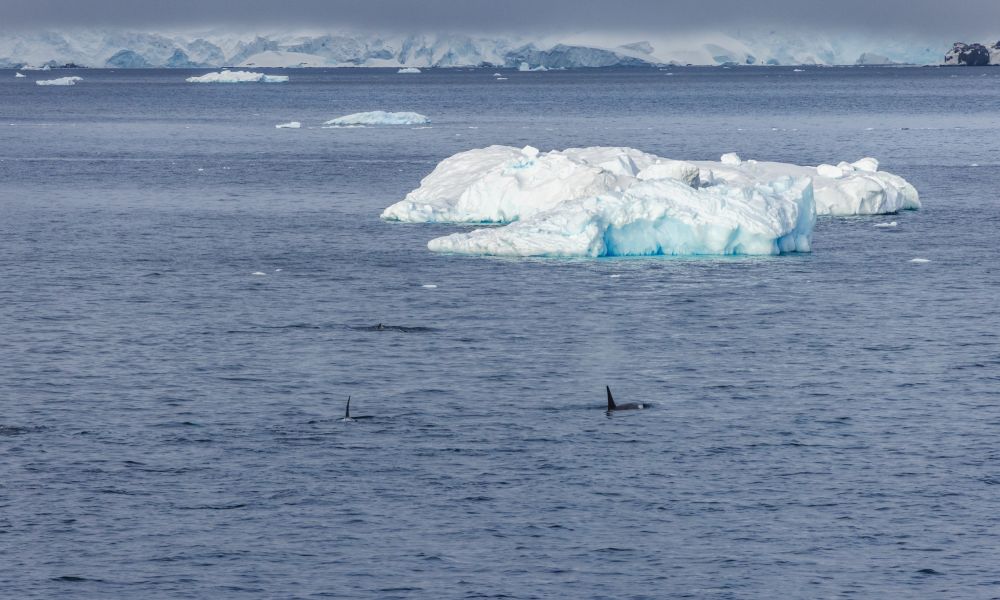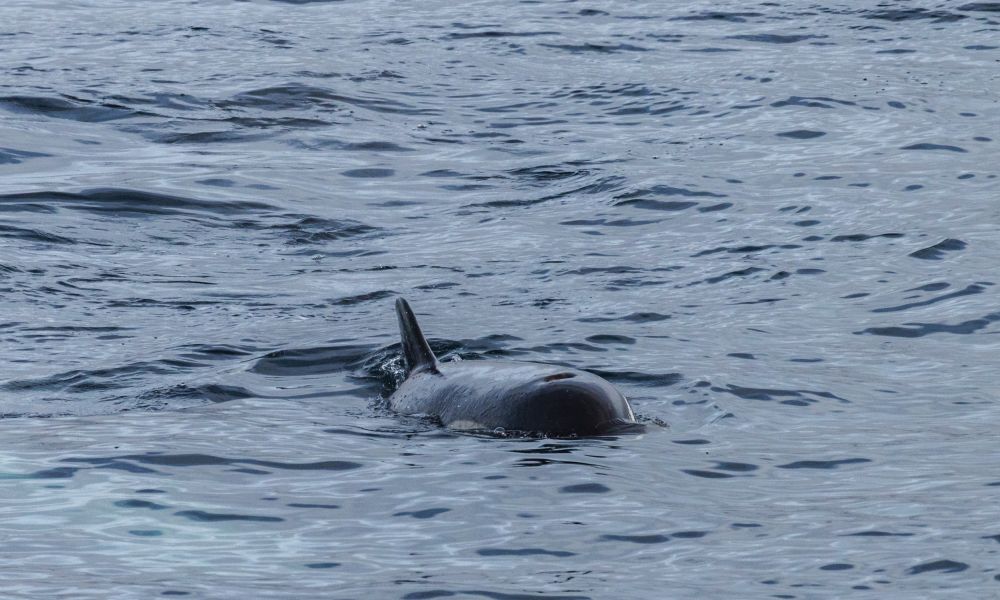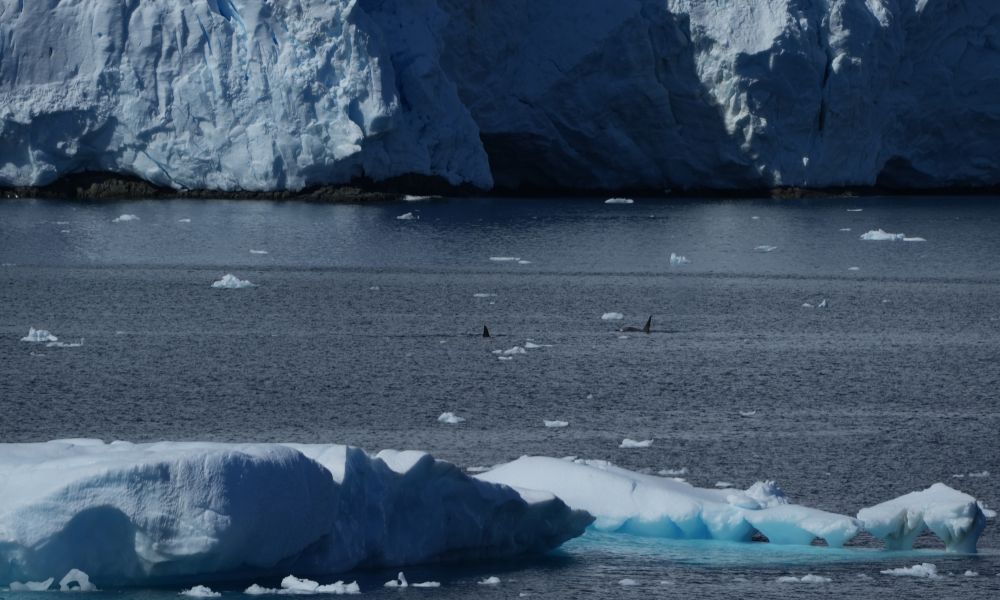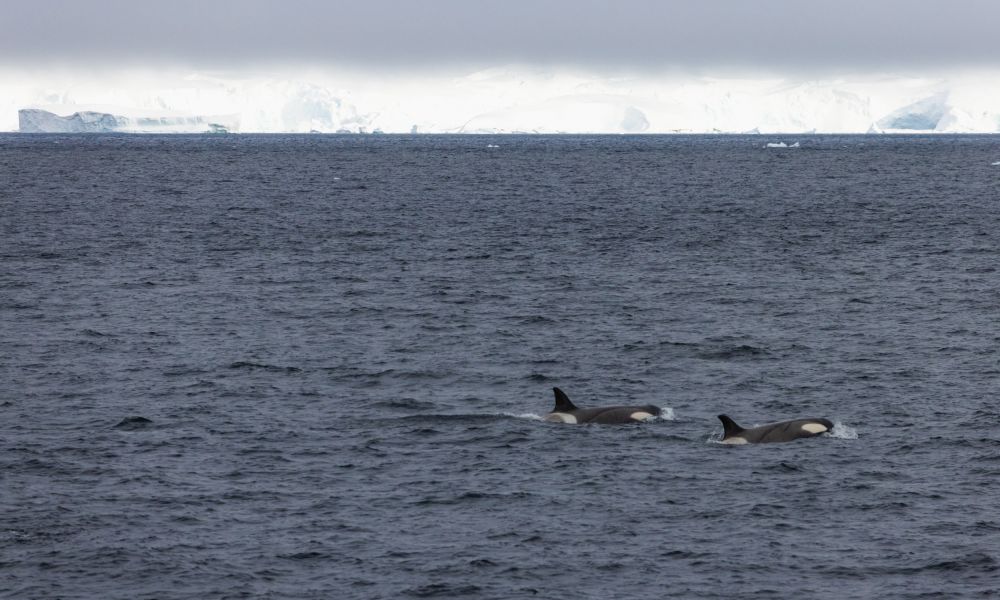What does a killer whale look like?
Orcas are instantly recognisable because of their black-and-white colouring, tall dorsal fin, and sturdy body. The black-and-white colours help the killer whale blend in both from above and below. The dark colour on the back matches the dark surface of the sea, while the bright underside is visible from below against the lighter sky and sunlight.
How much does an orca weigh?
The killer whale is the largest mammal-eating predator that has ever lived. Males typically measure about 6-7 m and weigh 4-6 tonnes. The most significant male orca sized ever found was measured 9,8 m and weighed 10 tonnes. Females are usually 5-6 m long and weigh between 1.5 and 3.6 tonnes, while the record is 8.5 m and 7.5 tonnes. Additionally, a baby orca, or calf, weighs about 180 kg (395 lbs) at birth.
What do orca whales eat?
The killer whale diet is highly varied. Scientists have discovered the following in its stomach: fish, squid, seals, sea lions, walruses, birds, sea turtles, otters, penguins, other whales, polar bears, and lizards! It can also consume carrion, and traces of its own species, which may have been carcasses, have also been found. Among the more unusual meals reported are blue whales and great white sharks. Fish are generally the most important source of nutrition, but marine mammals and squid also play a major role.
Where are the orcas spotted?
Orca habitats typically favour cooler seas around Antarctica and are widely spread across the world's oceans. They are also often seen in warmer waters such as around Hawaii, Australia, the Galápagos, and the Bahamas, as well as in the Gulf of Mexico and even upstream in rivers, for example, 177 km upstream of the Columbia River, and in the Rhine, the Thames, and Elbe. They prefer areas above the continental shelf, at depths of less than 200 metres where many fish are found, but avoid pack ice. In Canada and along the west coast of America, they follow seals and grey whales, while in the North Atlantic, they mostly follow herring.
Are orca whales dangerous to humans?
Despite their name, orca attacks on humans in the wild are unknown. On the other hand, despite orcas having no natural predators, parasites, cancer-related diseases, stomach ulcers, atherosclerosis, and similar conditions are all factors that increase mortality.
Are orca whales dolphins?
Yes! Orcas are the largest members of the dolphin family (Delphinidae). They share common features like conical teeth, advanced echolocation, and social behavior.
How fast can an orca swim?
The killer whale is one of the fastest swimmers among the whales. It can travel at a speed of almost 50 km/h, but it is rare for it to accelerate to this speed, which can only be maintained for a short time. In general, it swims at a speed of 3 to 10 km/h.




